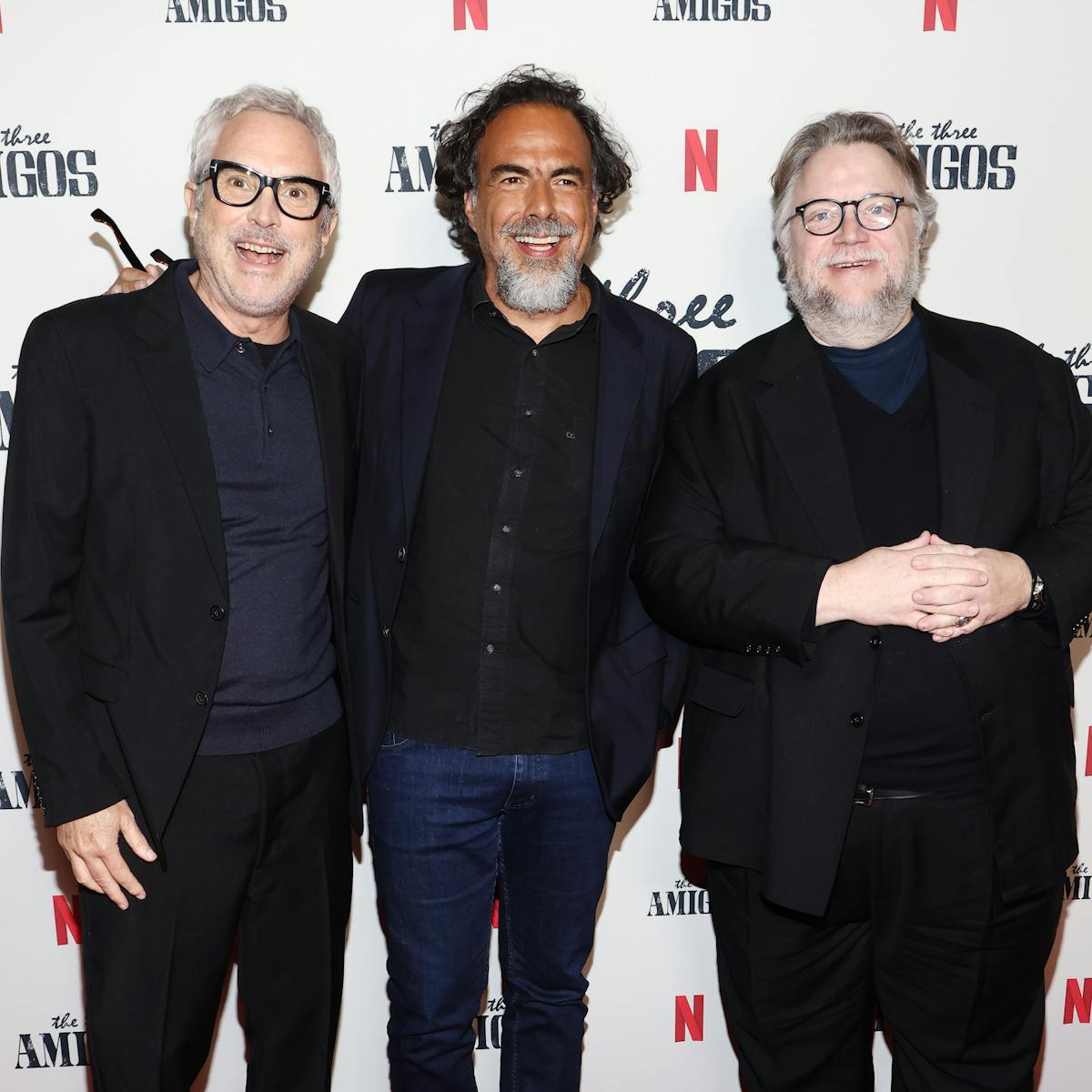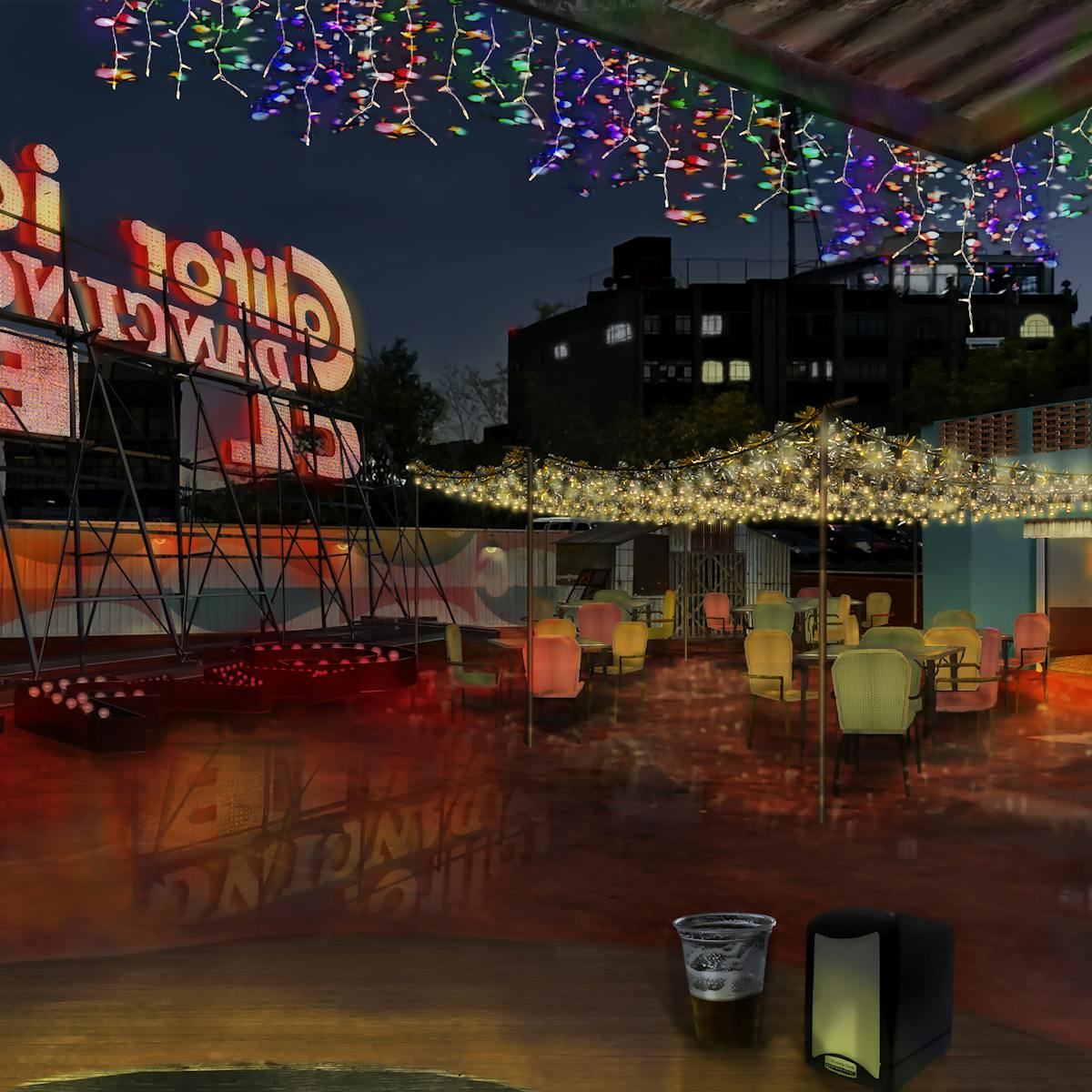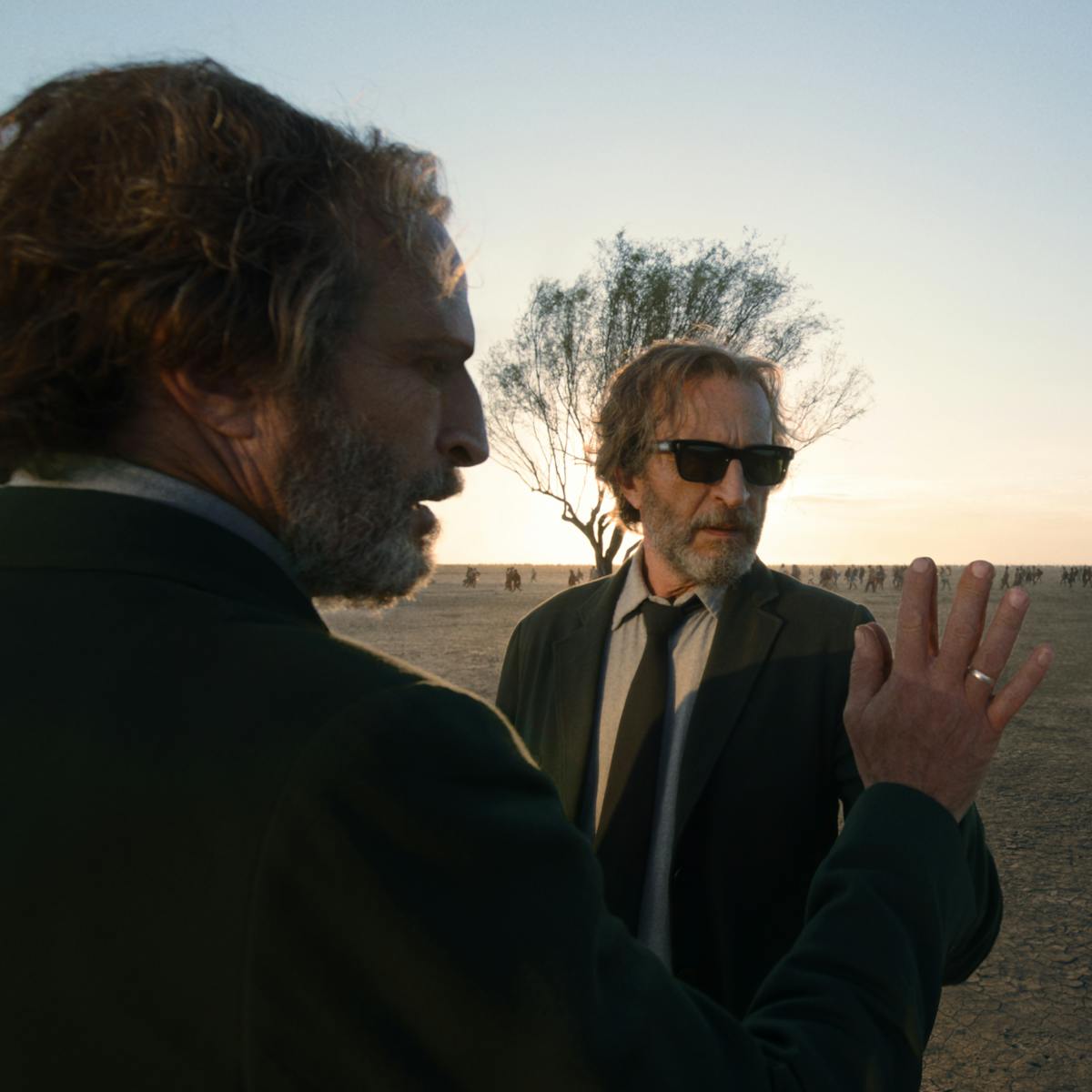The acclaimed cinematographer earns his second Oscar nomination for his stunning work on Alejandro González Iñárritu’s existential masterpiece. Here he discusses his film with Mank's cinematographer, Erik Messerschmidt.
During his decades-long career, Oscar-nominated cinematographer Darius Khondji has worked with the world’s most highly acclaimed filmmakers: David Fincher, Wong Kar-wai, Michael Haneke, the Safdie brothers, Danny Boyle, Bong Joon-ho, Pablo Larraín, Alan Parker (which led to Khondji’s first Oscar nod for Evita), and too many others to list. Yet the Iranian-born, Paris-raised Khondji says he felt a special kind of kinship with Mexican auteur Alejandro González Iñárritu the moment they began to seriously discuss a collaboration on the director’s latest film, BARDO, False Chronicle of a Handful of Truths. “It was not a usual conversation you have with a filmmaker,” Khondji says. “It was a deep emotional [connection] right away. He was telling me a lot of complicated and deep things. He was incredible. The way he was telling me about the story [and] the characters were very, very clear. I said, ‘Alejandro, I understand you very well.’”
That shared understanding paved the way for a true creative partnership on BARDO, Iñárritu’s ambitious and surreal film about a renowned Mexican journalist and documentary filmmaker, Silverio Gama (Daniel Giménez Cacho), who returns home and works through an existential crisis as he grapples with his identity, familial relationships, and the folly of his memories. BARDO was the first film Iñárritu had shot in Mexico since his searing 2000 breakthrough Amores perros, and both director and cinematographer found inspiration for the intense shoot as they worked in real environments across the country, filming in 65mm. “When I [was walking] in Mexico — in the buildings, in the city, in the streets, in the air, in the people — you could feel already what he was describing to me around the characters,” Khondji says. “That’s how I got into BARDO, really.”
Having received a second Oscar nomination for his stunning work on the film, Khondji recently spoke to fellow cinematographer Erik Messerschmidt — himself an Oscar winner for his work on Fincher’s 2020 biographical drama Mank — about his experiences shooting BARDO with Iñárritu and the creative influences that helped shape the singular imagery.
An edited version of the conversation follows.
Silverio Gama (Daniel Giménez Cacho)
Erik Messerschmidt: This film was your first time working with Alejandro. Had you met him prior? How did the collaboration come about?
Darius Khondji: We met years ago, but not for work. I was shooting a movie in New York, and he was coming to [set] to visit . . . I think it was Sean Penn. It was a quick meeting and he said goodbye when he left. He called me at the end of 2020 about BARDO. We started to talk about it and how important it was for him. He was very intense and very deep in the way he was expressing himself, what he wanted to do with the characters and the situations, and why he wanted to do the film. He was talking to me about his life in Mexico, in America. He was in Mexico, and I was in Paris, and [he] suddenly realized, Oh, Darius, you haven’t read the script. He sent it to me immediately and it was amazing, one of the greatest scripts I’ve ever read. I had to leave [to go to Mexico to do the film] immediately. It was like jumping out of a plane. It was just the most incredible emotional experience from the beginning.
EM: My favorite experiences are the ones where I meet the director before I read the script. I feel like you get so much from that meeting that you wouldn’t get if you just read the script without context. This movie feels like it is so much about the relationship between you and him and what you made with the script as opposed to what the script said. It really feels like something that explodes out of an idea.
DK: It’s exactly that, Erik. I wouldn’t change a word, it’s exactly like that.
EM: As I was preparing to talk to you, I watched the film again. I was so immersed in it, and I think a lot of it has to do with how you were moving the camera and how connected the camera was to the characters. Was that something that you guys talked about a lot? Did that develop in the rehearsal?
DK: Yes, it’s all intertwined because it was all rehearsed incredibly. We had numerous rehearsals. The camera was really choreographed. Alejandro designed everything. Some changes were made, but everything was prepared before. We shot in Vistavision 65. There was a techno crane and various heads [for the camera], but that was very, very complicated to do around the actors. We brought some of the best crew in the States and in Mexico. It was like an orchestra; Alejandro had composed it and he knew how to conduct it. But everything was rehearsed. Everything you see in the film was designed and thought of from the first conversation really.
Silverio Gama (Daniel Giménez Cacho) and Lucía (Griselda Siciliani)
EM: In the nightclub sequence, the camera’s so free and the lens is so wide, yet you were able to get all this beautiful color and texture in the image. Can you talk about how you guys approached that?
DK: The California Dancing Club was an old club that existed in Mexico that used to be very big in the 50s and 60s. We had decided to shoot that scene there, and it was very complicated. We designed it to tell this story, like a journey across the club. [Silverio] meets these friends that are so bitter. Then he meets his family and he has this wonderful family experience. There were all these different experiences with different people. And in the middle of that, the life of the dancing club is going on — we designed it to be like a river. It was a mix of Steadicam, and the Trinity, what we call “the monster” because it was very difficult to handle in the middle of people — that thing we use on a Steadicam to be able to shoot very low and very high. It was very tricky because, as you know, the [camera stabilizer] Trinity has a piece in the back, and the dancers were turning all the time around the camera. So, we had a lot of knocking [into] the camera. And then [we used] a techno crane.
We designed the lighting over various meetings we did in the club; it took a long time. We went a few times with Alejandro and then a few times together with the production designer [Eugenio Caballero] and his team, and we designed the light to be in continuous movement. [We wanted] different moments of light, different colors according to the different moments all across the journey. And some of that [we wanted] to be gritty, some to be very flamboyant. It was really fun to do, and I was very lucky to work with amazing people around us, all the artistic technicians; the people working on the film were particularly skillful, very talented.
I always feel that the camera is very related to music. The scene has a tempo, even the way actors talk to each other, so, the camera [has] to follow a tempo as well. When it’s totally in accordance between the camera and the actors, then you don’t realize the camera has moved somehow; this is the best.
Silverio Gama (Daniel Giménez Cacho)
EM: When you’re surrounded with such good people, you are really just up there waving the wand, just keeping it all paced properly. It’s like you’re keeping the orchestra in tune and keeping the mechanism moving. When I look at this film, there are so many different pieces. The subway car, the nightclub, this incredible sequence where he climbs this mountain of bodies. But it all feels very much like it’s from the same film to me. Was there a lot of reference material that you guys were using as you were developing these ideas?
DK: The reference that I loved was the color photography of Vivian Maier. Paul Delvaux is a Belgian surrealist painter, and we loved his work. And there’s a [Swedish] filmmaker that I discovered through Alejandro called Roy Andersson. It’s good [to] talk about the references because Vivian Maier was a very important one for me. It became really the music, the color of the film, for the skin tone, and for the transparency of the air and this kind of realness — not completely real, but something that’s also in your mind. Then Paul Delvaux was very important for the feeling of the long, moving shadows. So it was a mixture of these references. But you know how references are: They are like friends around you, they’re like little spirits almost. You travel with them, they are with you, [but] you should never use them literally.
EM: Right. It’s a way to start the conversation, not the way to end it.
DK: Exactly. And then you make it yours. [Alejandro and I] watched a few films together. We screened 8½, then — I love this movie — Los olvidados. We watched All That Jazz. We were watching movies about introspection in someone’s life. Roy Andersson was incredible. It’s like music, the way the camera can move, the way the story is told with the camera. We watched a lot of that, and it became BARDO.



